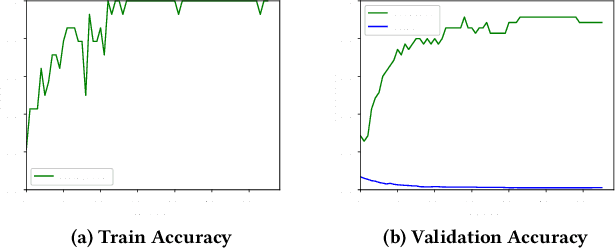Runcong Kuang
SpikeSim: An end-to-end Compute-in-Memory Hardware Evaluation Tool for Benchmarking Spiking Neural Networks
Oct 24, 2022Abstract:SNNs are an active research domain towards energy efficient machine intelligence. Compared to conventional ANNs, SNNs use temporal spike data and bio-plausible neuronal activation functions such as Leaky-Integrate Fire/Integrate Fire (LIF/IF) for data processing. However, SNNs incur significant dot-product operations causing high memory and computation overhead in standard von-Neumann computing platforms. Today, In-Memory Computing (IMC) architectures have been proposed to alleviate the "memory-wall bottleneck" prevalent in von-Neumann architectures. Although recent works have proposed IMC-based SNN hardware accelerators, the following have been overlooked- 1) the adverse effects of crossbar non-ideality on SNN performance due to repeated analog dot-product operations over multiple time-steps, 2) hardware overheads of essential SNN-specific components such as the LIF/IF and data communication modules. To this end, we propose SpikeSim, a tool that can perform realistic performance, energy, latency and area evaluation of IMC-mapped SNNs. SpikeSim consists of a practical monolithic IMC architecture called SpikeFlow for mapping SNNs. Additionally, the non-ideality computation engine (NICE) and energy-latency-area (ELA) engine performs hardware-realistic evaluation of SpikeFlow-mapped SNNs. Based on 65nm CMOS implementation and experiments on CIFAR10, CIFAR100 and TinyImagenet datasets, we find that the LIF/IF neuronal module has significant area contribution (>11% of the total hardware area). We propose SNN topological modifications leading to 1.24x and 10x reduction in the neuronal module's area and the overall energy-delay-product value, respectively. Furthermore, in this work, we perform a holistic comparison between IMC implemented ANN and SNNs and conclude that lower number of time-steps are the key to achieve higher throughput and energy-efficiency for SNNs compared to 4-bit ANNs.
Split Federated Learning on Micro-controllers: A Keyword Spotting Showcase
Oct 04, 2022



Abstract:Nowadays, AI companies improve service quality by aggressively collecting users' data generated by edge devices, which jeopardizes data privacy. To prevent this, Federated Learning is proposed as a private learning scheme, using which users can locally train the model without collecting users' raw data to servers. However, for machine-learning applications on edge devices that have hard memory constraints, implementing a large model using FL is infeasible. To meet the memory requirement, a recent collaborative learning scheme named split federal learning is a potential solution since it keeps a small model on the device and keeps the rest of the model on the server. In this work, we implement a simply SFL framework on the Arduino board and verify its correctness on the Chinese digits audio dataset for keyword spotting application with over 90% accuracy. Furthermore, on the English digits audio dataset, our SFL implementation achieves 13.89% higher accuracy compared to a state-of-the-art FL implementation.
 Add to Chrome
Add to Chrome Add to Firefox
Add to Firefox Add to Edge
Add to Edge